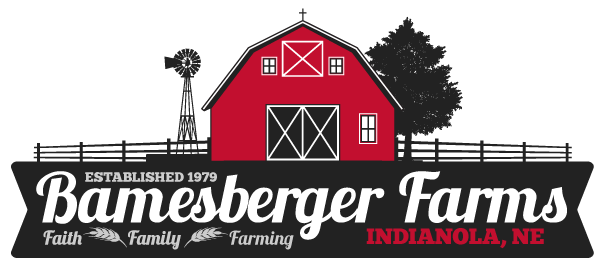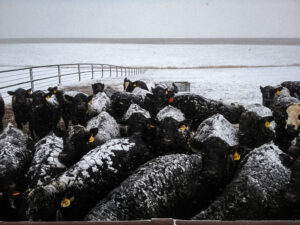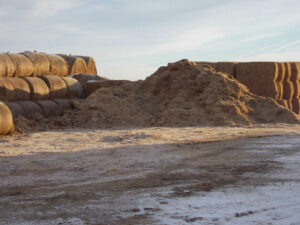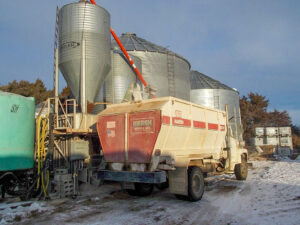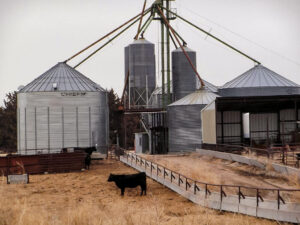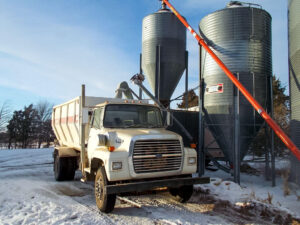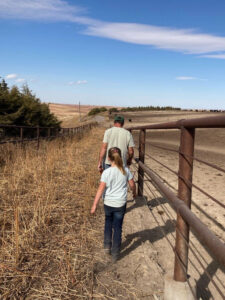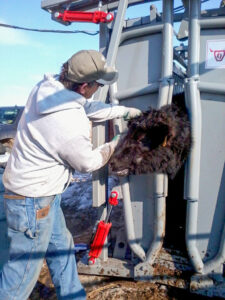Feedlot
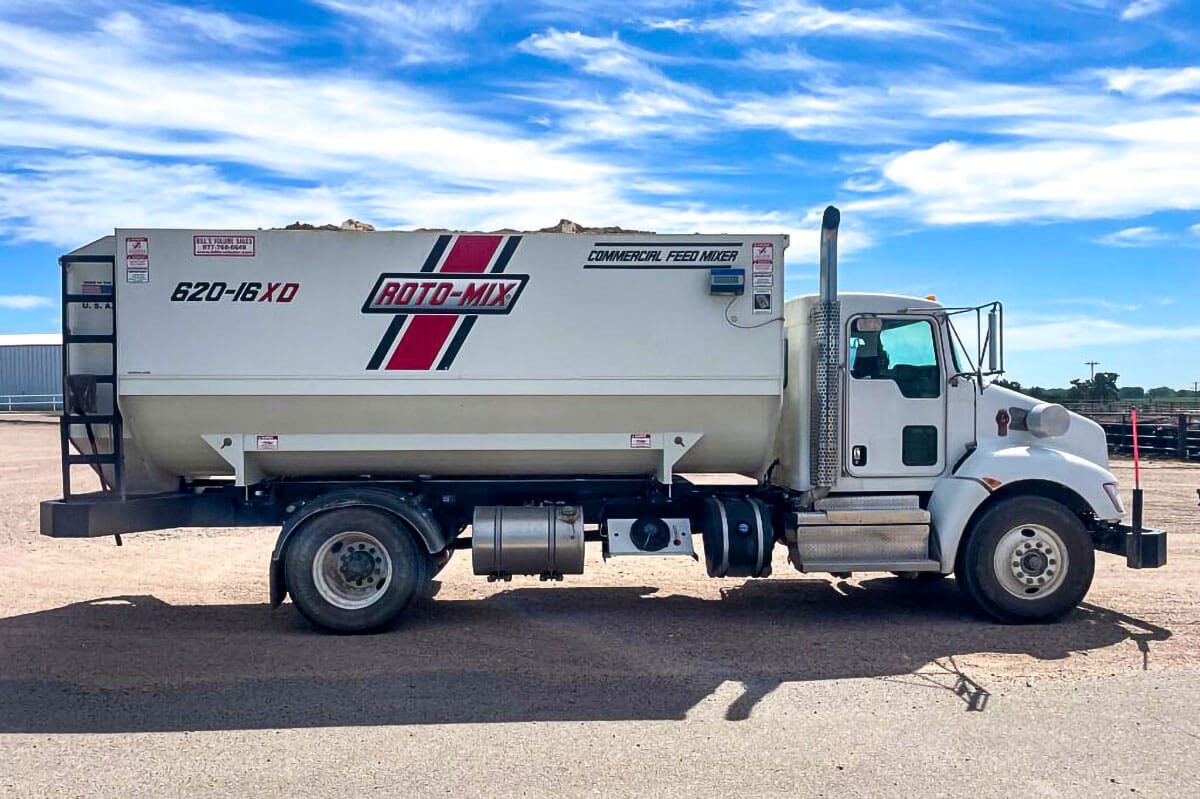
ABOVE: It takes a big feed truck to keep up with a feedlot full of hungry cattle!
About our Feedlot
I have always enjoyed feeding cattle. Weaning and feeding our own calves then naturally fit into our business plan. Our feedlot is located one mile northeast of our farmstead. We have eight bigger pens, four smaller pens, and three “sick pens”. Next to these pens is a circular tub and alleyway lead to a hydraulic chute, where cattle are processed and then released into one of three alleys controlled by hydraulic gates. Cattle can be weighed at the chute for ease of sorting. We have five pens at our farm as well with the same tub and alleyway. The maximum capacity of all our pens would be approximately 1200 head. Our program has been to fatten out all of the calves we raise and we often buy some more to add to them. Stockmans Feed in McCook formulates all of our rations and provides our needs and Dr Wayne Watkins is our feedlot veterinarian.
Our vaccination program includes 5-way IBR, insecticide pour on, and a clostridium shot. When we buy calves, a hemopholis shot and nasal IBR are given. We also have stalk trailers and our own semi cattle pot to haul the cattle to and from pastures and to market.
Feed Management
We supplement the young calves during the summer to get them used to eating a ration. Then they will start on feed quicker when it comes time to wean in the middle of August. Weaning early like this helps the cows can get in better condition before winter and the calves will get a head start in the feeding program. We use our smaller pens to wean in to keep the calves from running around as much. After about a month we sort and send them to the bigger pens. Therefore, the biggest steers then get put on full feed (high corn ration) by the first of December and the replacement heifers and smaller calves remain on grower rations.
For each new set of calves started on feed, we calculate a breakeven price. Inputs for this program are starting weight, feeder cost, shrink, death loss %, miscellaneous cost, intake factor, efficiency factor, weather % reduction, interest, feed cost, and a yardage charge. Results from these inputs give us calculations for finished date and weight, sale breakeven, average daily gain, purchase breakeven, and profit/loss per head. This printout also shows each ration amount fed and days on each ration. Many times this calculation indicates a loss, so then we know where we need to target our sales or cheapen up the inputs with contracts or market strategies.
Rations
The amount fed to each pen daily gets recorded in a log book. This is necessary for ingredient consumption and bunk management. The ration ingredients we use include; distillers grains from the Ethanol Plant, corn that is rolled at our farm into the truck mixer (which has a scales), molasses, and ground hay consisting of alfalfa and corn stalks.
Here is an example of one of our rations. This one is one of the beginning rations or one used to dry lot cull cows for slaughter. It is a Grower 48 Mcal/cwt (G48) ration.
Corn Rolled = 26.47 %
Dist Grains- 70% H2O = 30.00 %
35 HiCal Liquid = 3.80 %
Alfalfa Hay = 2.35 %
Corn Stalks = 37.37 %
Jeremiah 3:15
Faithless Israel Called to Repentance
15 And I will give you shepherds after my own heart, who will feed you with knowledge and understanding.
